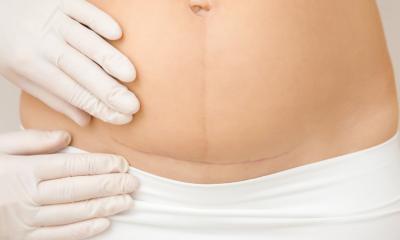Laughing gas likely cause of babies' deformities
Inhalation of anaesthetic laughing gas was blamed for the deformation of six babies born in the Leyenburg Hospital, The Hague.
Report: Michiel Bloemendaal
Laughing gas, discovered 233 years ago, is nitrous oxide, N2O (dinitrogen oxide). This colourless, non-toxic gas has a sweet odor and taste, and is dissociative - i.e. when inhaled, it can produce disorientation, euphoria, numbness, loss of motor co-ordination. If too much is inhaled too quickly, the gas can also produce mild nausea or lingering dizziness and loss of consciousness. N2O is thought to enteract with the plasma membranes of nerve cells in the brain, thus affecting communication at their synapses. Long-term use of this gas, in large quantities, has been associated with anaemia and neuropathy. Six babies born to nurses in the Leyenburg Hospital, The Hague, have serious deformities. Following a confidential investigation by Nijmegen University Medical Centre, the inhalation of the anaesthetic laughing gas was blamed for these abnormalities. During pregnancy, the mothers, who worked as nurses in the delivery room, would have inhaled the gas when changing gas cylinders and when removing masks from women who had been given it as an analgesic during delivery. The nurses were unaware of the dangers, and that in the second and third month of pregnancy defects can occur in the unborn.
Six of the 19 children born to nurses who worked in the obstetrics department, between 1994 and 2004, were born with gullet, anus, lips and palate, and heart defects - a figure regarded as very high by Nijmegen University. In addition, two children have Down’s syndrome and a remarkable number of the nurses are infertile.
The investigators conclude that exposure of the then pregnant nurses to Entonox (based on laughing gas and oxygen) is the most probable cause of the serious handicaps.
In October 2004, healthcare inspection authorities ordered that the use of Entonox be minimised. Meanwhile, Leyenburg Hospital stopped using Entonox, although they advised that there is no relation between Entonox and the defects.
Labour inspectors have decided to investigate all hospitals on the use of the gas in delivery rooms and first aid units. In the next three months, all hospitals will receive a questionaire on its use, and advice that this gas is dangerous to women in the early stages of pregnancy. At the beginning of 2006 all hospitals will be inspected.
The inspection is an expansion of an investigation on anaesthetic gases and anti-cancer drugs in operating theatres, which had been planned earlier. In that investigation delivery rooms were not included.
07.08.2006





